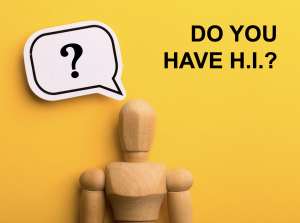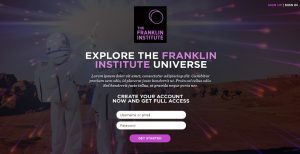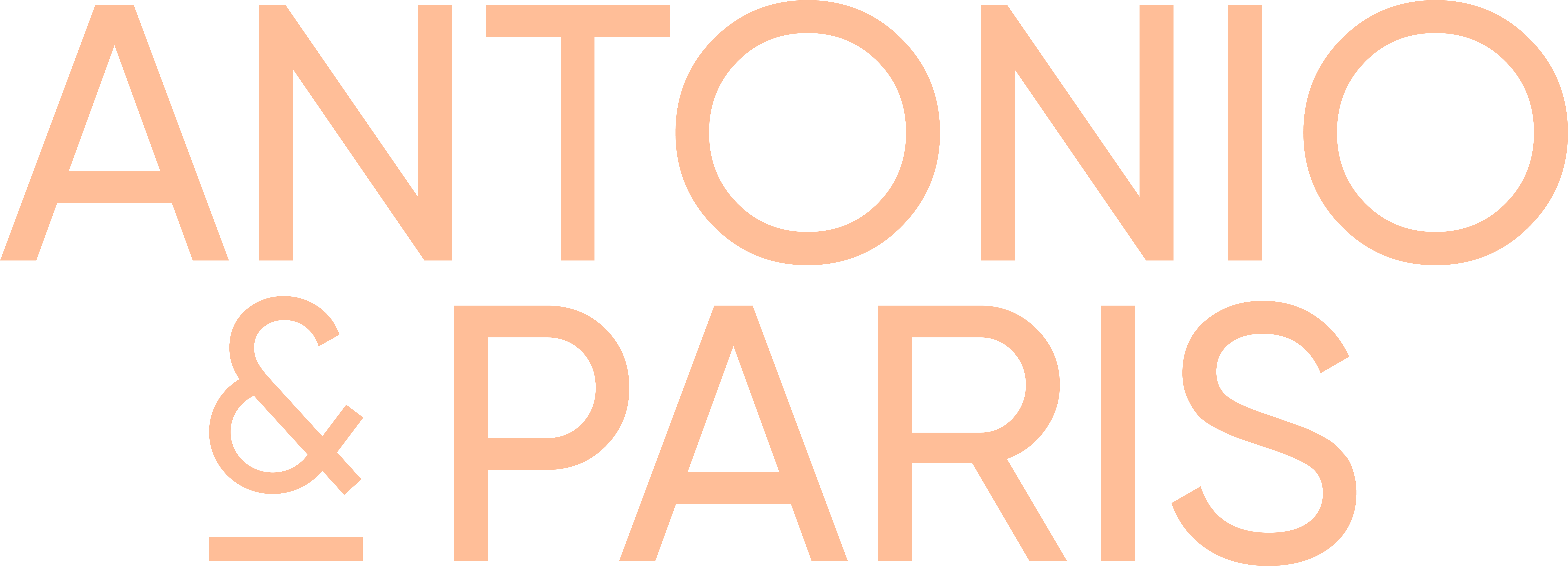The Power of H.I. (Human Intelligence)
BY: MICOL BOK | NOV. 15, 2023 – 10 MIN READ

Key takeaways (10 minute read):
- Data with Instinct: Make Your Brand Sexy: Infuse data with human insight, embrace the challenger brand mentality, and elevate your allure in the ever-changing landscape.
- Tools for Insightful Exploration: Antonio & Paris’ proprietary tools—Playground Sessions, Project Follow Me, and Voices Across the World—immerse you in the essence, provide real-time insights, and capture global perspectives.
- AI-Human Paradox in Branding: Witness the power of AI and Human Intelligence in the Myrtle Beach case, showing that data alone falls short, emphasizing the blend’s triumph.
- Brand Badassery Equation: Data + Human Insight: From reshaping alcohol preferences to fintech innovations and sustainable tourism, the message is clear—embrace the magic of data and humanity for a badass brand journey.
Data is smart business, but data plus human insight is sexy
In the ever-evolving landscape of branding, where algorithms and analytics often take center stage, there exists an unsung hero—Human Intelligence. At Antonio & Paris we don’t just understand this; we celebrate it. During our session at Adweek LATAM on the Power of H.I. we buckled up for a journey into the heart of brand brilliance, where we unraveled the power of Human Intelligence, adding a touch of raw, instinctual humanity to the science of branding. It’s more than deciphering numbers; it’s about revealing the heartbeat of your audience—their deepest desires, their unspoken fears, and the motivations that drive their interactions with your brand.
 At A&P, we believe in making data sexy. It’s not just about numbers; it’s about infusing data with the instinctual power of human insight. Because while data is the backbone of smart business decisions, it’s the fusion with human understanding that truly elevates your brand’s allure. Ultimately, this means embracing the challenger brand mentality. Human Intelligence means never settling, whether you’re a top player or an up-and-coming brand. The small fish, the innovators, are always on the prowl, ready to challenge the big fish. Being a challenger brand is not a defensive position; it’s an offensive strategy. Human Intelligence empowers brands to proactively navigate the ever-changing landscape, staying ahead of the curve and embracing innovation.
At A&P, we believe in making data sexy. It’s not just about numbers; it’s about infusing data with the instinctual power of human insight. Because while data is the backbone of smart business decisions, it’s the fusion with human understanding that truly elevates your brand’s allure. Ultimately, this means embracing the challenger brand mentality. Human Intelligence means never settling, whether you’re a top player or an up-and-coming brand. The small fish, the innovators, are always on the prowl, ready to challenge the big fish. Being a challenger brand is not a defensive position; it’s an offensive strategy. Human Intelligence empowers brands to proactively navigate the ever-changing landscape, staying ahead of the curve and embracing innovation.
At the heart of our approach are three proprietary tools: Playground Sessions, Project Follow Me, and Voices Across the World, each a beacon guiding us through the intricate dance of Human Intelligence. Playground Sessions are more than a research method; it’s a three-hour immersive process designed not just to gather data but to imprint participants with the essence of the subject under study. Through this method, we not only decode customer journeys but grant direction on how best to engage with them through authentic moments of joy. Project Follow Me invites you into the lives of your customers in real-time. Whether they’re shopping for a new phone, purchasing a car, or exploring senior living facilities, this tool provides an insider’s look at their journey, capturing candid moments of joy, difficulties, and core feelings. Voices Across the World takes our insights global, delivering actionable feedback from consumers worldwide through man-on-the-street interviews captured by award-winning documentary filmmakers. These tools are not just instruments; they are extensions of our commitment to dive deep into on-site research, uncovering insights that transcend the surface.
Inside the Data: Alcohol Consumption, Fintech, and Sustainable Tourism
In the interplay of branding, where technology meets humanity, the synergy of Artificial Intelligence (AI) and Human Intelligence (H.I.) becomes the anthem of innovation.

The power of A.I. is undeniable, it provides us with choices and saves us time. However, it is a tool, not a replacement for H.I. and it should be used as
such. During our AdWeek Session, we draw the fascinating example of Myrtle Beach, a small beach town in South Carolina. In order to drive more tourism, Myrtle Beach adopted an alternative campaign strategy using A.I. but at the same time depicting all the flaws of the case. Some examples follow below:
The best design breaks the rules, and boy does AI know how to do that. Not only did it include classic Myrtle Beach visuals invoking its 60 miles of sunny, sandy beaches, gorgeous sunrises, the SkyWheel and some massive four-legged alien soon to doom us all, but it also rebranded us as Mitarry Best! It must know something we don’t, so we’re going to roll with it.
 Wow. Incredible. AI got us a billboard in Times Square. We. Are. Floored. Our old agency said it was too expensive! Just look at the beachy influence it’s already having on those New Yorkers! They look ready for The Beach!
Wow. Incredible. AI got us a billboard in Times Square. We. Are. Floored. Our old agency said it was too expensive! Just look at the beachy influence it’s already having on those New Yorkers! They look ready for The Beach!
 We asked AI to create some PR buzz for Mitarry Best and it did not disappoint.With no ocean or pool of water of any kind on the moon, people there must be dying for a beach vacation. AI saw our opening and put a whole dang billboard on its surface! AI, you’re out of this world.
We asked AI to create some PR buzz for Mitarry Best and it did not disappoint.With no ocean or pool of water of any kind on the moon, people there must be dying for a beach vacation. AI saw our opening and put a whole dang billboard on its surface! AI, you’re out of this world.
AI, falls short in replicating the depth of human insight—an aspect Myrtle Beach, aka Mitarry Best, brilliantly highlighted. The Mitarry Best campaign, with its tongue-in-cheek approach, deliberately accentuates the flaws of AI, creating a delightful paradox that engages both AI enthusiasts and skeptics alike. The outcome was nothing short of triumph—Reddit flooded with comments, enthusiastic requests for merchandise, and a complete rebranding of their website to embrace the whimsical Mitarry Best identity. It seems that Mitarry Best will be A&P’s next off-site location!
Myrtle Beach is one example that demonstrated strategic brilliance, recognizing the significance of understanding the culture code when venturing into a new market. Unveiling the culture code becomes imperative in market exploration, and true mastery in this arena goes beyond merely deciphering data. To this point, during our session, we decided to put data against Human Intelligence (H.I.) to the test in three dynamic and evolving markets: Alcohol Consumption, Fintech, and Sustainable Tourism.
Let’s begin our exploration with Alcohol Consumption, a realm where data seemingly portrays a somber picture. According to the numbers:
- Compared to Millennials, Gen Z are drinking 20% less alcohol per individual and Millennials are also drinking less than Gen X and Boomers did at their age.
- Between 2015 and 2021, the market for zero alcohol beer grew about 35%, and ready to drink alternatives (such as seltzers and canned cocktails) are rising.
- Heineken is also adjusting their pricing to make it more competitive as their sales volume declined by 4.2% in the third quarter while their non-alcoholic product grew 3.5%
However, delving into the nuances, a broader question surfaces—does this data signify the death of alcohol consumption or a transformative shift in consumer habits? In a country like Mexico, where 40% of top-selling brands are alcoholic beverages, understanding this shift becomes imperative. Here, human instinct and intelligence come into play, prompting us to consider the possibility that the market isn’t dying but evolving.
Reflecting on the past, we witnessed a similar transition in the beverage sector during the sugar-free craze. Iconic brands like Coca-Cola and Pepsi reinvented their drinks to align with consumer demands, a bold move that extended beyond product development into a realm of brand reinvention. Fast forward to today, and nearly 68% of Coca-Cola’s beverage portfolio has less than 100 calories per 12-ounce serving. In 2022, 29% of the brand’s volume sold was low- or no-calorie, and a staggering 246 low- or no-sugar products were launched in 2022 alone.
Returning to the question of alcohol consumption, the unequivocal answer is no, it’s not dead. However, it demands adaptation. The landscape is evolving, with a noticeable shift towards healthier options as Millennials and Gen Z prioritize choices that resonate with their well-being. It’s not merely about escapism but rather connecting through cultural appreciation. Qualitative and quantitative consumer research are a vital tool in navigating this change, emphasizing the importance of offering healthier options and delivering authentic experiences.
Now, let’s explore the thriving world of Fintech in Mexico.
The Fintech landscape is booming with over 500 startups reshaping finance, yet the average Mexican consumer remains unfamiliar with most them. Digital transactions are on the rise, but the dominance of cash and lingering distrust in traditional banks hinder Fintech’s reach into Mexico’s informal economy. Traditional banks are losing trust as they embrace digital transformations, with recent financial turmoil in Silicon Valley amplifying concerns.
In this evolving scenario, a critical question emerges – Why do we need to be a bank?
Enter OXXO, Mexico’s largest convenience store, which has seamlessly merged its extensive retail infrastructure with financial services. The Spin by OXXO initiative, featuring a ready-to-use Visa debit card and app, bridges the gap between the digital cloud and a tangible, comprehensible environment. In a matter of months, OXXO took over the market surpassing every fintech company out there and reaching a booming number of 7M users in just one year. OXXO’s success lies in reading its audience – acknowledging the distrust in banks and leveraging the inherent trust in their brand. This is Human Intelligence at its finest.
Finally, let’s turn our attention to Sustainable Tourism.
Sustainability has been a buzzword for a while, especially in Mexico, where the city of Mexico City proudly wears the crown as the sustainable tourism capital. But what does sustainable travel truly entail? And, perhaps more importantly, how can brands authentically and responsibly incorporate sustainability into their messaging when connecting with consumers?
 In our exploration, instead of looking beyond Mexico, we turned our gaze inward. Here’s what Human Intelligence (HI) shared with us: Mexicans tend to spend with an eye on the future, rooted in a deep family culture ingrained in Mexico and Latin countries. This contrasts with the more individualistic approach prevalent in the US. It’s a “we vs. me” mentality, influencing how sustainability is perceived and communicated.
In our exploration, instead of looking beyond Mexico, we turned our gaze inward. Here’s what Human Intelligence (HI) shared with us: Mexicans tend to spend with an eye on the future, rooted in a deep family culture ingrained in Mexico and Latin countries. This contrasts with the more individualistic approach prevalent in the US. It’s a “we vs. me” mentality, influencing how sustainability is perceived and communicated.
For effective communication, segmentation studies and messaging architecture based on personas become vital. Understanding that different audiences have varied priorities and values allows brands to engage authentically. This rings particularly true for Gen Z, whose interests align closely with the Mexican ideology. They care about who they purchase from and demand honesty in messaging and actions.
The bottom line: honesty is the currency that matters. Brands need to be transparent, not just with their customers but with themselves. In an era where consumers can easily call out insincerity, studying consumer habits, asking pertinent questions, and delving into the motivations behind their behavior become essential. This not only breaks the mold but also opens avenues for presenting businesses in a new, engaging light that resonates with an audience that values authenticity.
Putting H.I. to work
To wrap up our session, we explored three compelling client case studies: The Franklin Institute, Mini, and AT&T.
 The Franklin Institute is one of the oldest science museums in the US which just recently celebrated its 200th anniversary. Facing this great accomplishment, a couple years aback, it reached out to A&P to work on a complete rebranding and to help them tackle the challenge of standing out in a world saturated with entertainment options. In a landscape teeming with cinemas, at-home entertainment, festivals, streaming platforms, YouTube, and more, the museum aimed not just to compete with other cultural institutions but to captivate consumers and younger generations. The solution: edutainment. We advocated for positioning the brand as more than just educational but as an educational and entertainment hybrid. Embracing the spirit of the times, the institute ventured into initiations such as a streaming platform, gaming options, and cutting-edge, technology-driven exhibitions. It was a success. Data had told us that education was an issue and that museums were on the down wave, but through H.I. we went beyond the obvious, we pushed boundaries, and expanded horizons for true brand evolution.
The Franklin Institute is one of the oldest science museums in the US which just recently celebrated its 200th anniversary. Facing this great accomplishment, a couple years aback, it reached out to A&P to work on a complete rebranding and to help them tackle the challenge of standing out in a world saturated with entertainment options. In a landscape teeming with cinemas, at-home entertainment, festivals, streaming platforms, YouTube, and more, the museum aimed not just to compete with other cultural institutions but to captivate consumers and younger generations. The solution: edutainment. We advocated for positioning the brand as more than just educational but as an educational and entertainment hybrid. Embracing the spirit of the times, the institute ventured into initiations such as a streaming platform, gaming options, and cutting-edge, technology-driven exhibitions. It was a success. Data had told us that education was an issue and that museums were on the down wave, but through H.I. we went beyond the obvious, we pushed boundaries, and expanded horizons for true brand evolution.
 In our collaboration with Mini, the initial data suggested that consumers were primarily concerned about miles per gallon. However, a deeper dive revealed that the true essence wasn’t about fuel efficiency but about attitude. Mini owners weren’t just fixated on numbers; they were drawn to the emotional connection and the unique feeling of being part of a creative class. Regardless of age, gender, or job title, owning a Mini meant embracing a certain vibe. To truly grasp the consumer sentiment, Mini launched an initiative where owners drove across the country “Mini takes the States”, symbolizing a sense of belonging to the brand. We joined them on this journey, immersing ourselves in the experience, conducting interviews along the way, offering assistance, and keenly observing their interactions. Going beyond surface-level insights, we delved into the culture surrounding Mini, enabling us to connect with and communicate effectively with the target audience.
In our collaboration with Mini, the initial data suggested that consumers were primarily concerned about miles per gallon. However, a deeper dive revealed that the true essence wasn’t about fuel efficiency but about attitude. Mini owners weren’t just fixated on numbers; they were drawn to the emotional connection and the unique feeling of being part of a creative class. Regardless of age, gender, or job title, owning a Mini meant embracing a certain vibe. To truly grasp the consumer sentiment, Mini launched an initiative where owners drove across the country “Mini takes the States”, symbolizing a sense of belonging to the brand. We joined them on this journey, immersing ourselves in the experience, conducting interviews along the way, offering assistance, and keenly observing their interactions. Going beyond surface-level insights, we delved into the culture surrounding Mini, enabling us to connect with and communicate effectively with the target audience.
La st, but certainly not least, let’s talk about AT&T. AT&T approached us during a challenging phase, having acquired Cingular but faced with the consequences of merging it directly under the AT&T brand. The identity clash was evident—AT&T, with its established image of an older, golf-playing gentleman, absorbed Cingular, a brand that resonated strongly with the young millennial demographic. The merger led to a loss of connection with the younger audience, which found a new home with the evergreen T-Mobile brand. Seeking our expertise, AT&T posed a crucial question: How can we reestablish a connection with the millennial generation?
st, but certainly not least, let’s talk about AT&T. AT&T approached us during a challenging phase, having acquired Cingular but faced with the consequences of merging it directly under the AT&T brand. The identity clash was evident—AT&T, with its established image of an older, golf-playing gentleman, absorbed Cingular, a brand that resonated strongly with the young millennial demographic. The merger led to a loss of connection with the younger audience, which found a new home with the evergreen T-Mobile brand. Seeking our expertise, AT&T posed a crucial question: How can we reestablish a connection with the millennial generation?
Our in-depth analysis uncovered a pivotal insight: it wasn’t just about reliability for this generation; it was about sociability. In response, we came up with a karaoke app—a platform designed for millennials to engage with the AT&T brand purely for the joy of it, without any pressure to make purchases. The app’s success exceeded expectations, attracting not only everyday users but also influencers and professional singers. It organically evolved into a social movement, propelling the brand forward with millennials. By aligning with their interests and avoiding a pushy sales approach, AT&T achieved something that is key between a brand and consumer—it went beyond merely making a sale; it created a genuine and honest connection.
The “Badassery Equation”
In the whirlwind of branding, the golden ticket is a vibrant blend of data and Human Intelligence (H.I.), the true dynamo that propels brands into realms of authenticity and innovation. As we journeyed through the dynamic markets of alcohol consumption, fintech, and sustainable tourism, the fusion of AI, data, and H.I. were proof of the undeniable need for synergy. From the whimsical escapade of Myrtle Beach to the nuanced shifts in alcohol preferences, the message resounds: Data + Human Insight = Badass
The case studies of The Franklin Institute, Mini, and AT&T echo the movement. From redefining educational landscapes to capturing the spirit of Mini owners and resonating with millennials, this blend is the secret sauce that transcends traditional boundaries. It’s not just about numbers; it’s about diving into the soul of your audience. So, the final takeaway is simple—embrace the magic that happens when data and humanity collide, and let your brand journey be nothing short of Badass.
A&P is a brand innovation design studio that uses its collective talent to generate ideas that will increase shareholder wealth for their clients. How? By keeping consumers wanting more. A&P delivers brilliant brand experiences in the physical and digital world every moment of every day. Their work includes consumer insight, brand innovation, creative development, mobile and technology solutions for global brands such as AT&T, Mini USA, DIRECTV, Newell Rubbermaid, Tenet Healthcare, and Barco Escape. For more information about A&P, visit them on antonioandparis.com.
Key takeaways (10 minute read):
- Data with Instinct: Make Your Brand Sexy: Infuse data with human insight, embrace the challenger brand mentality, and elevate your allure in the ever-changing landscape.
- Tools for Insightful Exploration: Antonio & Paris’ proprietary tools—Playground Sessions, Project Follow Me, and Voices Across the World—immerse you in the essence, provide real-time insights, and capture global perspectives.
- AI-Human Paradox in Branding: Witness the power of AI and Human Intelligence in the Myrtle Beach case, showing that data alone falls short, emphasizing the blend’s triumph.
- Brand Badassery Equation: Data + Human Insight: From reshaping alcohol preferences to fintech innovations and sustainable tourism, the message is clear—embrace the magic of data and humanity for a badass brand journey.
Data is smart business, but data plus human insight is sexy
In the ever-evolving landscape of branding, where algorithms and analytics often take center stage, there exists an unsung hero—Human Intelligence. At Antonio & Paris we don’t just understand this; we celebrate it. During our session at Adweek LATAM on the Power of H.I. we buckled up for a journey into the heart of brand brilliance, where we unraveled the power of Human Intelligence, adding a touch of raw, instinctual humanity to the science of branding. It’s more than deciphering numbers; it’s about revealing the heartbeat of your audience—their deepest desires, their unspoken fears, and the motivations that drive their interactions with your brand.
 At A&P, we believe in making data sexy. It’s not just about numbers; it’s about infusing data with the instinctual power of human insight. Because while data is the backbone of smart business decisions, it’s the fusion with human understanding that truly elevates your brand’s allure. Ultimately, this means embracing the challenger brand mentality. Human Intelligence means never settling, whether you’re a top player or an up-and-coming brand. The small fish, the innovators, are always on the prowl, ready to challenge the big fish. Being a challenger brand is not a defensive position; it’s an offensive strategy. Human Intelligence empowers brands to proactively navigate the ever-changing landscape, staying ahead of the curve and embracing innovation.
At A&P, we believe in making data sexy. It’s not just about numbers; it’s about infusing data with the instinctual power of human insight. Because while data is the backbone of smart business decisions, it’s the fusion with human understanding that truly elevates your brand’s allure. Ultimately, this means embracing the challenger brand mentality. Human Intelligence means never settling, whether you’re a top player or an up-and-coming brand. The small fish, the innovators, are always on the prowl, ready to challenge the big fish. Being a challenger brand is not a defensive position; it’s an offensive strategy. Human Intelligence empowers brands to proactively navigate the ever-changing landscape, staying ahead of the curve and embracing innovation.
At the heart of our approach are three proprietary tools: Playground Sessions, Project Follow Me, and Voices Across the World, each a beacon guiding us through the intricate dance of Human Intelligence. Playground Sessions are more than a research method; it’s a three-hour immersive process designed not just to gather data but to imprint participants with the essence of the subject under study. Through this method, we not only decode customer journeys but grant direction on how best to engage with them through authentic moments of joy. Project Follow Me invites you into the lives of your customers in real-time. Whether they’re shopping for a new phone, purchasing a car, or exploring senior living facilities, this tool provides an insider’s look at their journey, capturing candid moments of joy, difficulties, and core feelings. Voices Across the World takes our insights global, delivering actionable feedback from consumers worldwide through man-on-the-street interviews captured by award-winning documentary filmmakers. These tools are not just instruments; they are extensions of our commitment to dive deep into on-site research, uncovering insights that transcend the surface.
Inside the Data: Alcohol Consumption, Fintech, and Sustainable Tourism
In the interplay of branding, where technology meets humanity, the synergy of Artificial Intelligence (AI) and Human Intelligence (H.I.) becomes the anthem of innovation.

The power of A.I. is undeniable, it provides us with choices and saves us time. However, it is a tool, not a replacement for H.I. and it should be used as
such. During our AdWeek Session, we draw the fascinating example of Myrtle Beach, a small beach town in South Carolina. In order to drive more tourism, Myrtle Beach adopted an alternative campaign strategy using A.I. but at the same time depicting all the flaws of the case. Some examples follow below:
The best design breaks the rules, and boy does AI know how to do that. Not only did it include classic Myrtle Beach visuals invoking its 60 miles of sunny, sandy beaches, gorgeous sunrises, the SkyWheel and some massive four-legged alien soon to doom us all, but it also rebranded us as Mitarry Best! It must know something we don’t, so we’re going to roll with it.
 Wow. Incredible. AI got us a billboard in Times Square. We. Are. Floored. Our old agency said it was too expensive! Just look at the beachy influence it’s already having on those New Yorkers! They look ready for The Beach!
Wow. Incredible. AI got us a billboard in Times Square. We. Are. Floored. Our old agency said it was too expensive! Just look at the beachy influence it’s already having on those New Yorkers! They look ready for The Beach!
 We asked AI to create some PR buzz for Mitarry Best and it did not disappoint.With no ocean or pool of water of any kind on the moon, people there must be dying for a beach vacation. AI saw our opening and put a whole dang billboard on its surface! AI, you’re out of this world.
We asked AI to create some PR buzz for Mitarry Best and it did not disappoint.With no ocean or pool of water of any kind on the moon, people there must be dying for a beach vacation. AI saw our opening and put a whole dang billboard on its surface! AI, you’re out of this world.
AI, falls short in replicating the depth of human insight—an aspect Myrtle Beach, aka Mitarry Best, brilliantly highlighted. The Mitarry Best campaign, with its tongue-in-cheek approach, deliberately accentuates the flaws of AI, creating a delightful paradox that engages both AI enthusiasts and skeptics alike. The outcome was nothing short of triumph—Reddit flooded with comments, enthusiastic requests for merchandise, and a complete rebranding of their website to embrace the whimsical Mitarry Best identity. It seems that Mitarry Best will be A&P’s next off-site location!
 Myrtle Beach is one example that demonstrated strategic brilliance, recognizing the significance of understanding the culture code when venturing into a new market. Unveiling the culture code becomes imperative in market exploration, and true mastery in this arena goes beyond merely deciphering data. To this point, during our session, we decided to put data against Human Intelligence (H.I.) to the test in three dynamic and evolving markets: Alcohol Consumption, Fintech, and Sustainable Tourism.
Myrtle Beach is one example that demonstrated strategic brilliance, recognizing the significance of understanding the culture code when venturing into a new market. Unveiling the culture code becomes imperative in market exploration, and true mastery in this arena goes beyond merely deciphering data. To this point, during our session, we decided to put data against Human Intelligence (H.I.) to the test in three dynamic and evolving markets: Alcohol Consumption, Fintech, and Sustainable Tourism.
Let’s begin our exploration with Alcohol Consumption, a realm where data seemingly portrays a somber picture. According to the numbers:
- Compared to Millennials, Gen Z are drinking 20% less alcohol per individual and Millennials are also drinking less than Gen X and Boomers did at their age.
- Between 2015 and 2021, the market for zero alcohol beer grew about 35%, and ready to drink alternatives (such as seltzers and canned cocktails) are rising.
- Heineken is also adjusting their pricing to make it more competitive as their sales volume declined by 4.2% in the third quarter while their non-alcoholic product grew 3.5%
However, delving into the nuances, a broader question surfaces—does this data signify the death of alcohol consumption or a transformative shift in consumer habits? In a country like Mexico, where 40% of top-selling brands are alcoholic beverages, understanding this shift becomes imperative. Here, human instinct and intelligence come into play, prompting us to consider the possibility that the market isn’t dying but evolving.
Reflecting on the past, we witnessed a similar transition in the beverage sector during the sugar-free craze. Iconic brands like Coca-Cola and Pepsi reinvented their drinks to align with consumer demands, a bold move that extended beyond product development into a realm of brand reinvention. Fast forward to today, and nearly 68% of Coca-Cola’s beverage portfolio has less than 100 calories per 12-ounce serving. In 2022, 29% of the brand’s volume sold was low- or no-calorie, and a staggering 246 low- or no-sugar products were launched in 2022 alone.
Returning to the question of alcohol consumption, the unequivocal answer is no, it’s not dead. However, it demands adaptation. The landscape is evolving, with a noticeable shift towards healthier options as Millennials and Gen Z prioritize choices that resonate with their well-being. It’s not merely about escapism but rather connecting through cultural appreciation. Qualitative and quantitative consumer research are a vital tool in navigating this change, emphasizing the importance of offering healthier options and delivering authentic experiences.
Now, let’s explore the thriving world of Fintech in Mexico.
The Fintech landscape is booming with over 500 startups reshaping finance, yet the average Mexican consumer remains unfamiliar with most them. Digital transactions are on the rise, but the dominance of cash and lingering distrust in traditional banks hinder Fintech’s reach into Mexico’s informal economy.Traditional banks are losing trust as they embrace digital transformations, with recent financial turmoil in Silicon Valley amplifying concerns.
In this evolving scenario, a critical question emerges – Why do we need to be a bank?
Enter OXXO, Mexico’s largest convenience store, which has seamlessly merged its extensive retail infrastructure with financial services. The Spin by OXXO initiative, featuring a ready-to-use Visa debit card and app, bridges the gap between the digital cloud and a tangible, comprehensible environment. In a matter of months, OXXO took over the market surpassing every fintech company out there and reaching a booming number of 7M users in just one year. OXXO’s success lies in reading its audience – acknowledging the distrust in banks and leveraging the inherent trust in their brand. This is Human Intelligence at its finest.
Finally, let’s turn our attention to Sustainable Tourism.
Sustainability has been a buzzword for a while, especially in Mexico, where the city of Mexico City proudly wears the crown as the sustainable tourism capital. But what does sustainable travel truly entail? And, perhaps more importantly, how can brands authentically and responsibly incorporate sustainability into their messaging when connecting with consumers?
 In our exploration, instead of looking beyond Mexico, we turned our gaze inward. Here’s what Human Intelligence (HI) shared with us: Mexicans tend to spend with an eye on the future, rooted in a deep family culture ingrained in Mexico and Latin countries. This contrasts with the more individualistic approach prevalent in the US. It’s a “we vs. me” mentality, influencing how sustainability is perceived and communicated.
In our exploration, instead of looking beyond Mexico, we turned our gaze inward. Here’s what Human Intelligence (HI) shared with us: Mexicans tend to spend with an eye on the future, rooted in a deep family culture ingrained in Mexico and Latin countries. This contrasts with the more individualistic approach prevalent in the US. It’s a “we vs. me” mentality, influencing how sustainability is perceived and communicated.
For effective communication, segmentation studies and messaging architecture based on personas become vital. Understanding that different audiences have varied priorities and values allows brands to engage authentically. This rings particularly true for Gen Z, whose interests align closely with the Mexican ideology. They care about who they purchase from and demand honesty in messaging and actions.
The bottom line: honesty is the currency that matters. Brands need to be transparent, not just with their customers but with themselves. In an era where consumers can easily call out insincerity, studying consumer habits, asking pertinent questions, and delving into the motivations behind their behavior become essential. This not only breaks the mold but also opens avenues for presenting businesses in a new, engaging light that resonates with an audience that values authenticity.
Putting H.I. to work
To wrap up our session, we explored three compelling client case studies: The Franklin Institute, Mini, and AT&T.
 The Franklin Institute is one of the oldest science museums in the US which just recently celebrated its 200th anniversary. Facing this great accomplishment, a couple years aback, it reached out to A&P to work on a complete rebranding and to help them tackle the challenge of standing out in a world saturated with entertainment options. In a landscape teeming with cinemas, at-home entertainment, festivals, streaming platforms, YouTube, and more, the museum aimed not just to compete with other cultural institutions but to captivate consumers and younger generations. The solution: edutainment. We advocated for positioning the brand as more than just educational but as an educational and entertainment hybrid. Embracing the spirit of the times, the institute ventured into initiations such as a streaming platform, gaming options, and cutting-edge, technology-driven exhibitions. It was a success. Data had told us that education was an issue and that museums were on the down wave, but through H.I. we went beyond the obvious, we pushed boundaries, and expanded horizons for true brand evolution.
The Franklin Institute is one of the oldest science museums in the US which just recently celebrated its 200th anniversary. Facing this great accomplishment, a couple years aback, it reached out to A&P to work on a complete rebranding and to help them tackle the challenge of standing out in a world saturated with entertainment options. In a landscape teeming with cinemas, at-home entertainment, festivals, streaming platforms, YouTube, and more, the museum aimed not just to compete with other cultural institutions but to captivate consumers and younger generations. The solution: edutainment. We advocated for positioning the brand as more than just educational but as an educational and entertainment hybrid. Embracing the spirit of the times, the institute ventured into initiations such as a streaming platform, gaming options, and cutting-edge, technology-driven exhibitions. It was a success. Data had told us that education was an issue and that museums were on the down wave, but through H.I. we went beyond the obvious, we pushed boundaries, and expanded horizons for true brand evolution.
 In our collaboration with Mini, the initial data suggested that consumers were primarily concerned about miles per gallon. However, a deeper dive revealed that the true essence wasn’t about fuel efficiency but about attitude. Mini owners weren’t just fixated on numbers; they were drawn to the emotional connection and the unique feeling of being part of a creative class. Regardless of age, gender, or job title, owning a Mini meant embracing a certain vibe. To truly grasp the consumer sentiment, Mini launched an initiative where owners drove across the country “Mini takes the States”, symbolizing a sense of belonging to the brand. We joined them on this journey, immersing ourselves in the experience, conducting interviews along the way, offering assistance, and keenly observing their interactions. Going beyond surface-level insights, we delved into the culture surrounding Mini, enabling us to connect with and communicate effectively with the target audience.
In our collaboration with Mini, the initial data suggested that consumers were primarily concerned about miles per gallon. However, a deeper dive revealed that the true essence wasn’t about fuel efficiency but about attitude. Mini owners weren’t just fixated on numbers; they were drawn to the emotional connection and the unique feeling of being part of a creative class. Regardless of age, gender, or job title, owning a Mini meant embracing a certain vibe. To truly grasp the consumer sentiment, Mini launched an initiative where owners drove across the country “Mini takes the States”, symbolizing a sense of belonging to the brand. We joined them on this journey, immersing ourselves in the experience, conducting interviews along the way, offering assistance, and keenly observing their interactions. Going beyond surface-level insights, we delved into the culture surrounding Mini, enabling us to connect with and communicate effectively with the target audience.
La st but certainly not least, let’s talk about AT&T. AT&T approached us during a challenging phase, having acquired Cingular but faced with the consequences of merging it directly under the AT&T brand. The identity clash was evident—AT&T, with its established image of an older, golf-playing gentleman, absorbed Cingular, a brand that resonated strongly with the young millennial demographic. The merger led to a loss of connection with the younger audience, which found a new home with the evergreen T-Mobile brand. Seeking our expertise, AT&T posed a crucial question: How can we reestablish a connection with the millennial generation?
st but certainly not least, let’s talk about AT&T. AT&T approached us during a challenging phase, having acquired Cingular but faced with the consequences of merging it directly under the AT&T brand. The identity clash was evident—AT&T, with its established image of an older, golf-playing gentleman, absorbed Cingular, a brand that resonated strongly with the young millennial demographic. The merger led to a loss of connection with the younger audience, which found a new home with the evergreen T-Mobile brand. Seeking our expertise, AT&T posed a crucial question: How can we reestablish a connection with the millennial generation?
Our in-depth analysis uncovered a pivotal insight: it wasn’t just about reliability for this generation; it was about sociability. In response, we came up with a karaoke app—a platform designed for millennials to engage with the AT&T brand purely for the joy of it, without any pressure to make purchases. The app’s success exceeded expectations, attracting not only everyday users but also influencers and professional singers. It organically evolved into a social movement, propelling the brand forward with millennials. By aligning with their interests and avoiding a pushy sales approach, AT&T achieved something that is key between a brand and consumer—it went beyond merely making a sale; it created a genuine and honest connection.
The “Badassery Equation”
In the whirlwind of branding, the golden ticket is a vibrant blend of data and Human Intelligence (H.I.), the true dynamo that propels brands into realms of authenticity and innovation. As we journeyed through the dynamic markets of alcohol consumption, fintech, and sustainable tourism, the fusion of AI, data, and H.I. were proof of the undeniable need for synergy. From the whimsical escapade of Myrtle Beach to the nuanced shifts in alcohol preferences, the message resounds: Data + Human Insight = Badass
The case studies of The Franklin Institute, Mini, and AT&T echo the movement. From redefining educational landscapes to capturing the spirit of Mini owners and resonating with millennials, this blend is the secret sauce that transcends traditional boundaries. It’s not just about numbers; it’s about diving into the soul of your audience. So, the final takeaway is simple—embrace the magic that happens when data and humanity collide, and let your brand journey be nothing short of Badass.
A&P is a brand innovation design studio that uses its collective talent to generate ideas that will increase shareholder wealth for their clients. How? By keeping consumers wanting more. A&P delivers brilliant brand experiences in the physical and digital world every moment of every day. Their work includes consumer insight, brand innovation, creative development, mobile and technology solutions for global brands such as AT&T, Mini USA, DIRECTV, Newell Rubbermaid, Tenet Healthcare, and Barco Escape. For more information about A&P, visit them on antonioandparis.com.

WRITTEN BY
Micol Bok
Short Bio —Micol Bok joined the team of Antonio & Paris in August 2021 with a bag-pack full of knowledge in the hospitality and entertainment sector. Prior to A&P, Micol launched rising music artists with Universal Music Latin and consulted for luxury brands like Chopard (Switzerland), Marriott (NYC), and Belmond Resorts (Mexico), all while growing her own influencer marketing agency in Mexico. Her International experience combined with her knowledge of the Mexican market, made her the best candidate for the Managing Director position at A&P. Micol is now working on opening the A&P offices in Mexico City and expanding the reach of the agency in LATAM during this new exciting phase of growth.

WRITTEN BY
Micol Bok
Short Bio — Micol Bok joined the team of Antonio & Paris in August 2021 with a bag-pack full of knowledge in the hospitality and entertainment sector. Prior to A&P, Micol launched rising music artists with Universal Music Latin and consulted for luxury brands like Chopard (Switzerland), Marriott (NYC), and Belmond Resorts (Mexico), all while growing her own influencer marketing agency in Mexico. Her International experience combined with her knowledge of the Mexican market, made her the best candidate for the Managing Director position at A&P. Micol is now working on opening the A&P offices in Mexico City and expanding the reach of the agency in LATAM during this new exciting phase of growth.

